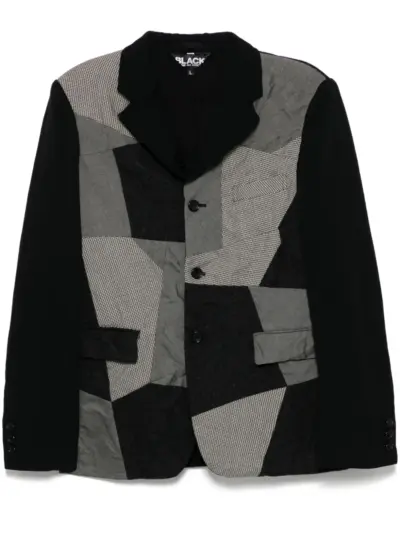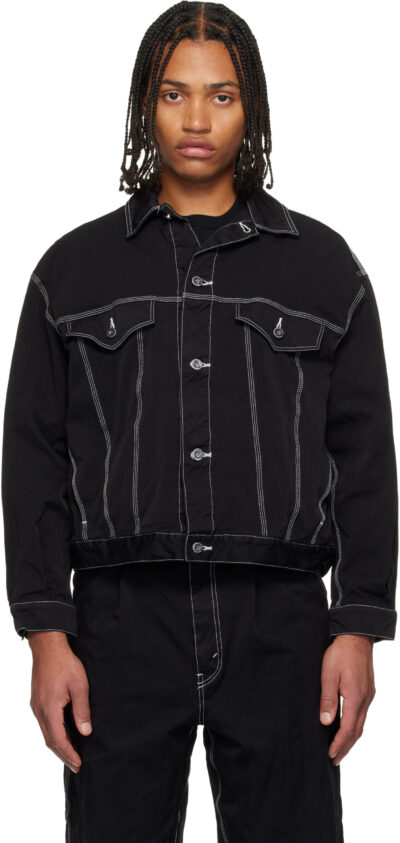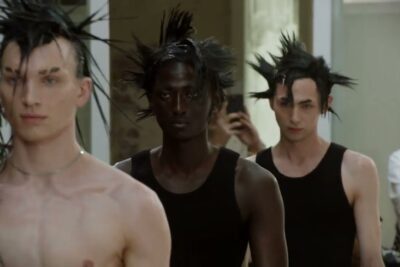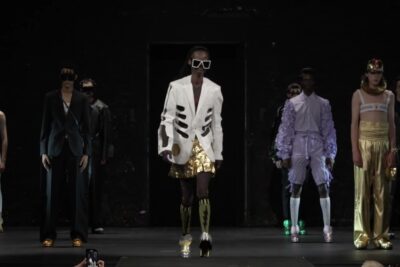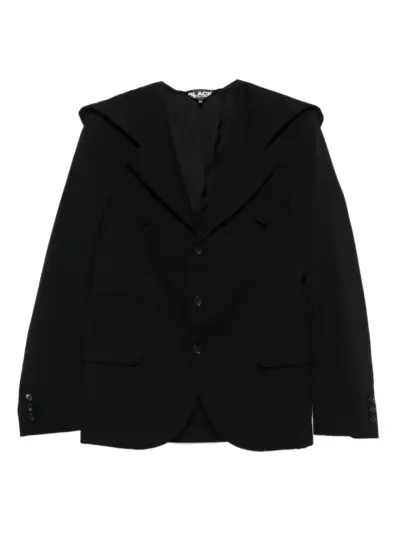
About Comme des Garçons
Comme des Garçons was founded in Tokyo in 1969 by Rei Kawakubo, and has built an international reputation for breaking rules, challenging beauty standards, and rethinking the purpose of clothing.
Rei Kawakubo was born in Tokyo in 1942 and studied fine arts and literature at Keio University. Without formal fashion design training, Kawakubo began working as a stylist in the late 1960s. Her independent spirit quickly led her to start creating her own clothing, and in 1969 she registered her brand name Comme des Garçons—French for “like boys.” The name reflected Kawakubo’s early preference for androgyny and gender-neutral silhouettes, themes that would become central to the brand’s identity.
Throughout the 1970s, Comme des Garçons built a cult following in Japan with its monochromatic, asymmetrical designs that stood in stark contrast to the colorful, body-conscious fashion trends of the time. By 1975, Kawakubo opened her first Tokyo boutique, and the brand’s reputation for intellectual, rebellious style began to grow.
The turning point came in 1981, when Comme des Garçons debuted in Paris. The collection—dominated by black, oversized silhouettes, raw edges, and a distressed aesthetic—shocked the fashion establishment. Critics described the look as “Hiroshima chic,” but the collection’s radical departure from glamour solidified Kawakubo as a groundbreaking force.
At its core, Comme des Garçons is built on anti-fashion principles—rejecting trends, ignoring conventional beauty ideals, and instead exploring imperfection, asymmetry, and conceptual storytelling. Kawakubo has famously said she designs “for the woman who is independent and who is not swayed by what her husband thinks.”
Her collections often function as wearable art installations, exploring abstract ideas such as “the body meets dress” (Spring/Summer 1997) or “lumps and bumps” (Spring/Summer 1997), which distorted the human silhouette with padded protrusions. These provocative designs not only redefined the boundaries of fashion but also sparked deeper conversations about identity, form, and gender.
In the decades since its Paris debut, Comme des Garçons has grown into a global fashion empire. The brand operates multiple diffusion lines, each with its own personality:
- Comme des Garçons Homme – Tailored menswear with a twist.
- Comme des Garçons Play – Casual, streetwear-inspired clothing, instantly recognizable by the iconic heart-with-eyes logo designed by Filip Pagowski.
- Comme des Garçons Noir, SHIRT, and Wallet – Niche sub-brands that explore specific design avenues.
Kawakubo has also fostered creative collaborations with brands like Nike, Converse, and Supreme, bringing avant-garde sensibilities into mainstream streetwear.
One of Kawakubo’s most influential moves beyond clothing design was the creation of Dover Street Market in London in 2004. More than just a retail space, it’s a curated environment where fashion, art, and culture meet. The multi-level concept store—now in cities like Tokyo, New York, Los Angeles, and Beijing—features installations, rotating displays, and a mix of high fashion and experimental labels.
Comme des Garçons has had an undeniable impact on both the fashion industry and cultural discourse. Its influence can be seen in the rise of deconstruction as a fashion language, the popularity of gender-neutral clothing, and the acceptance of conceptual runway shows as legitimate art forms.
Rei Kawakubo herself was honored with a retrospective at The Metropolitan Museum of Art’s Costume Institute in 2017 titled “Rei Kawakubo/Comme des Garçons: Art of the In-Between”—only the second living designer to receive such an exhibition, after Yves Saint Laurent.
Today, Comme des Garçons remains as unpredictable and innovative as ever. Kawakubo continues to produce collections that challenge not only the limits of fashion but also the expectations of the audience. From voluminous cocoon shapes to conceptual themes like “multi-dimensional graffiti” and “metamorphosis,” each season is a new exploration into uncharted creative territory.
While many luxury fashion houses follow commercial trends, Comme des Garçons stays committed to creative freedom. Its unique balance of intellectual design and global cultural influence ensures its place as one of the most important and respected avant-garde fashion brands in history.
Comme des Garçons Knowledge Base
-
What does Comme des Garçons mean?
Comme des Garçons is French for “like boys.”
Rei Kawakubo chose the name in 1969 after being inspired by a lyric in a French song by Françoise Hardy (“Tous les garçons et les filles”). The phrase reflects her early design philosophy—embracing androgyny, rejecting traditional femininity, and creating clothing that could be worn with the same ease and confidence as menswear.
It’s worth noting that while the brand name is French, Kawakubo herself is Japanese, and the choice of French was partly to give the label an international, sophisticated aura when it launched in Tokyo’s fashion scene.
-
Who is the founder of Comme des Garçons?
The founder of Comme des Garçons is Rei Kawakubo, a Japanese fashion designer born in Tokyo in 1942.
She established the brand in 1969, first selling her designs under the name Comme des Garçons before opening her first boutique in Tokyo in 1975. Kawakubo is known for her avant-garde, anti-fashion approach—favoring asymmetry, deconstruction, and conceptual storytelling over conventional beauty or trends.
-
Is Junywa Watanabe part of Comme des Garçons?
Junya Watanabe is essentially Comme des Garçons’ most prominent in-house designer after Kawakubo, operating his own line but fully supported and produced by CDG.
Junya Watanabe joined Comme des Garçons in 1984 as a patternmaker right after graduating from Tokyo’s Bunka Fashion College.
Rei Kawakubo recognized his talent early and promoted him to design Comme des Garçons Tricot (the knitwear line) in 1987, and then Comme des Garçons Homme in 1992.
In 1993, he debuted his namesake brand, Junya Watanabe Comme des Garçons, as part of the Comme des Garçons company. This means it is not an independent brand—it operates within the CDG corporate structure.
While Kawakubo is known for conceptual silhouettes, Watanabe is celebrated for technical innovation, especially in fabric development, pattern cutting, and functional clothing with a conceptual edge.
Junya Watanabe’s label is shown during Paris Fashion Week, but Comme des Garçons handles production, business operations, and distribution. He also designs Comme des Garçons Homme menswear collections.



